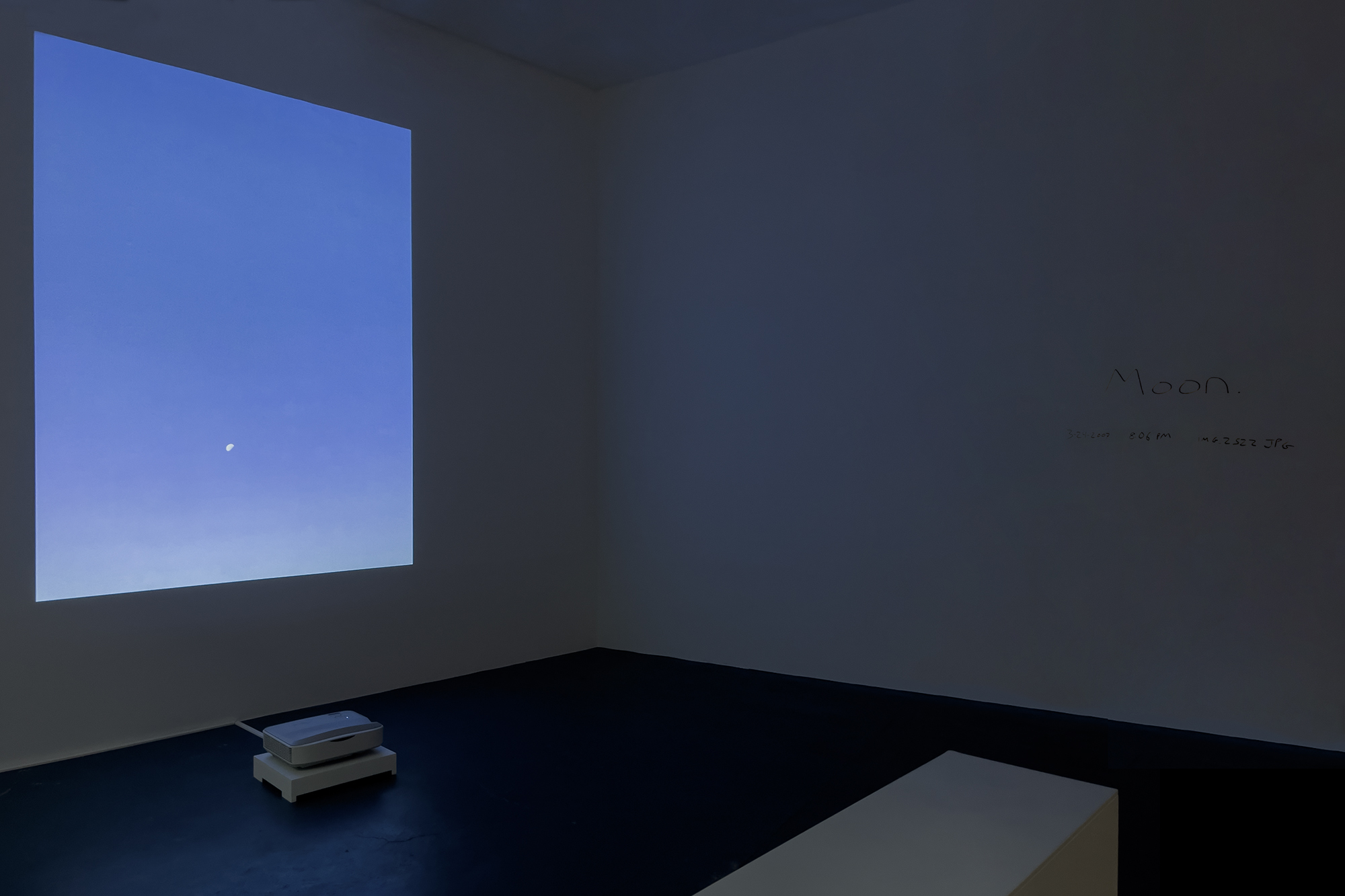
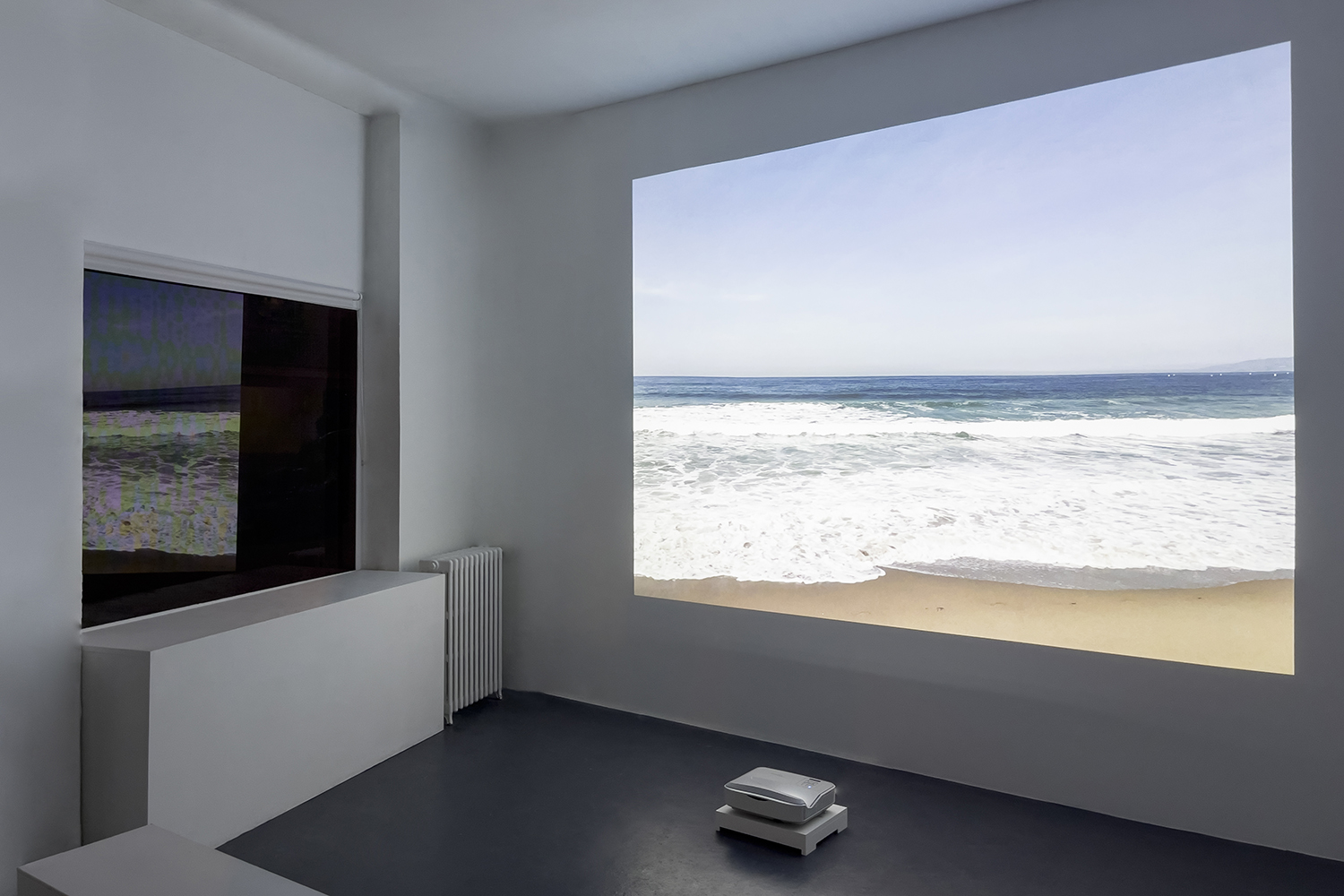
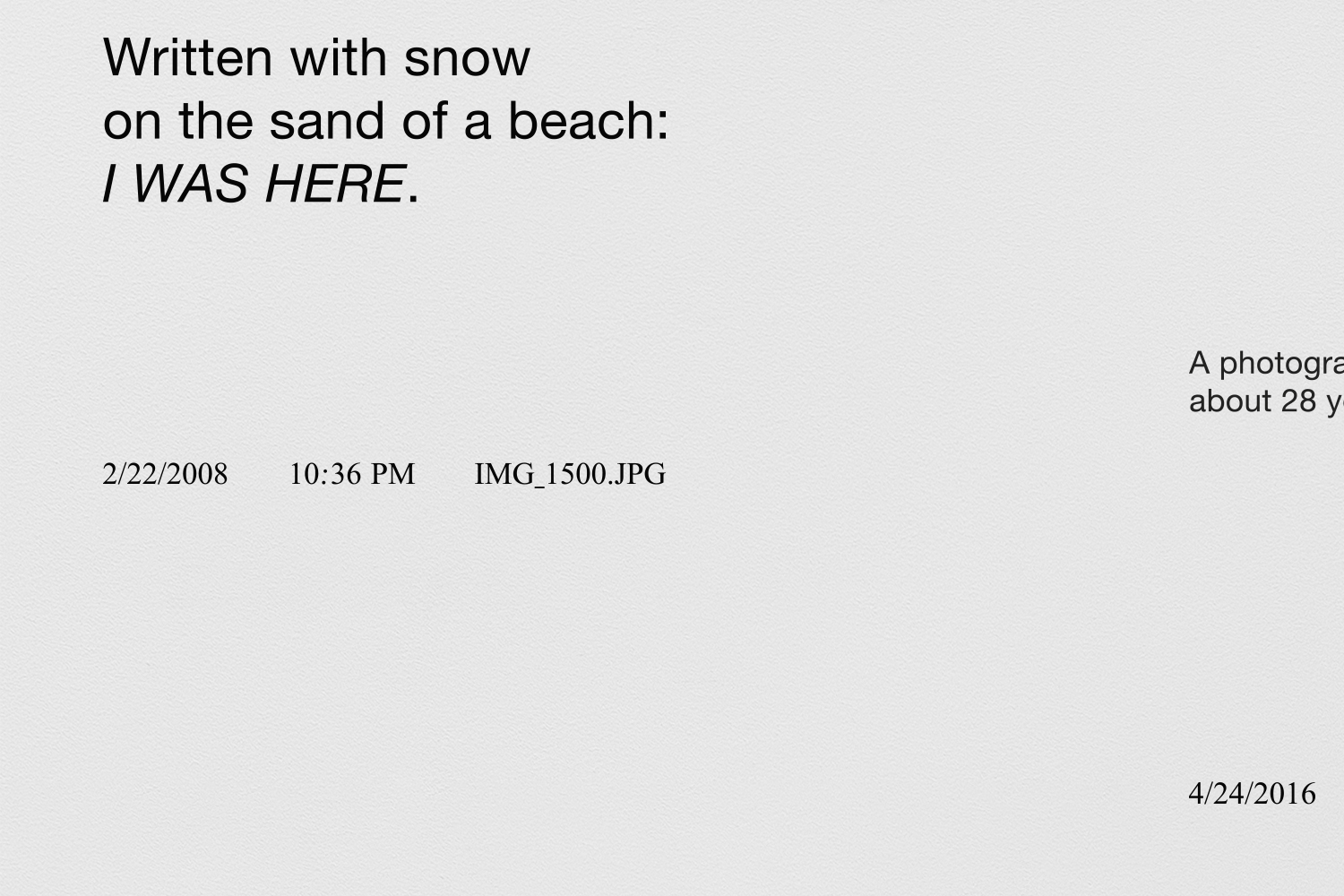
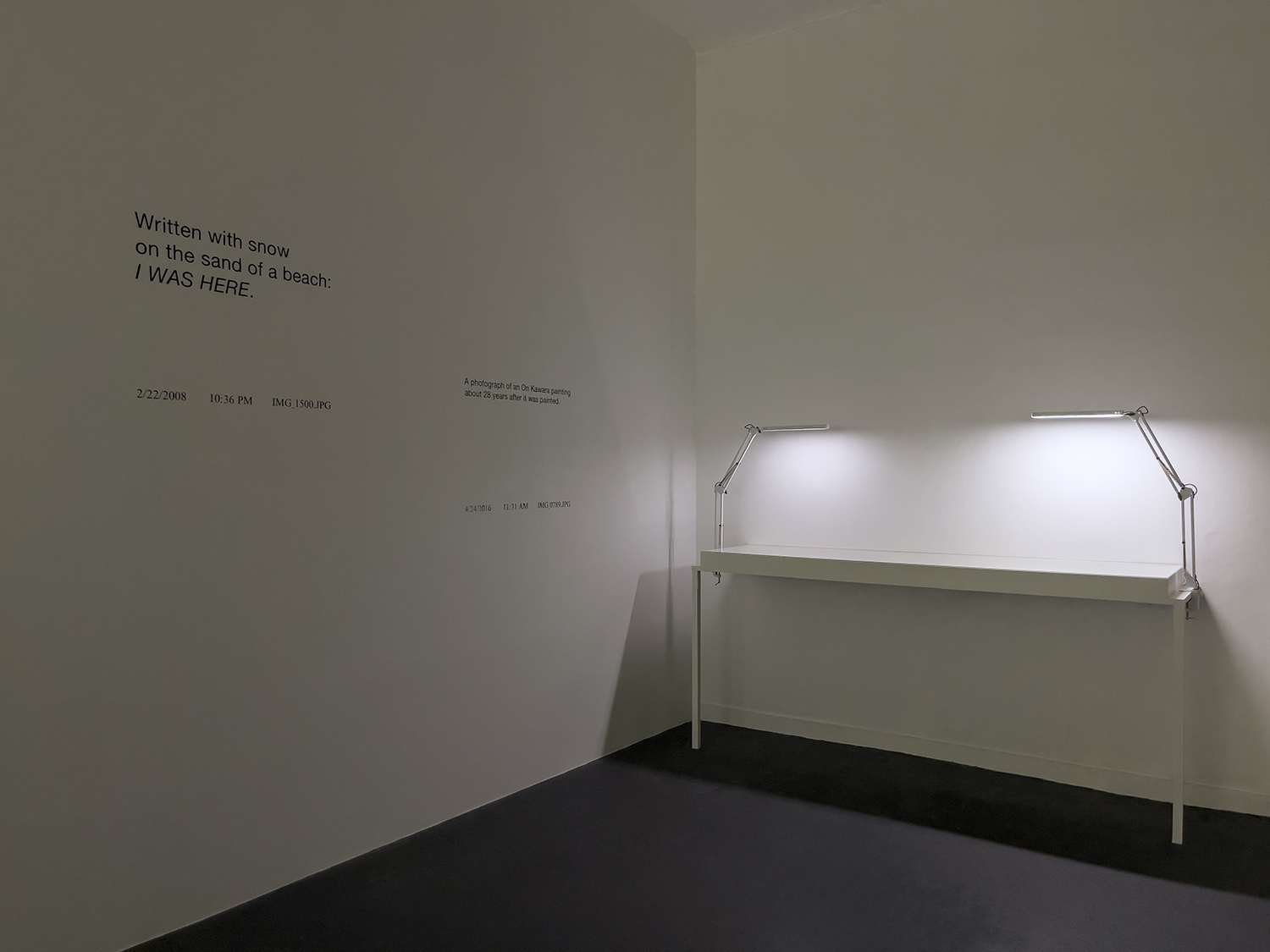
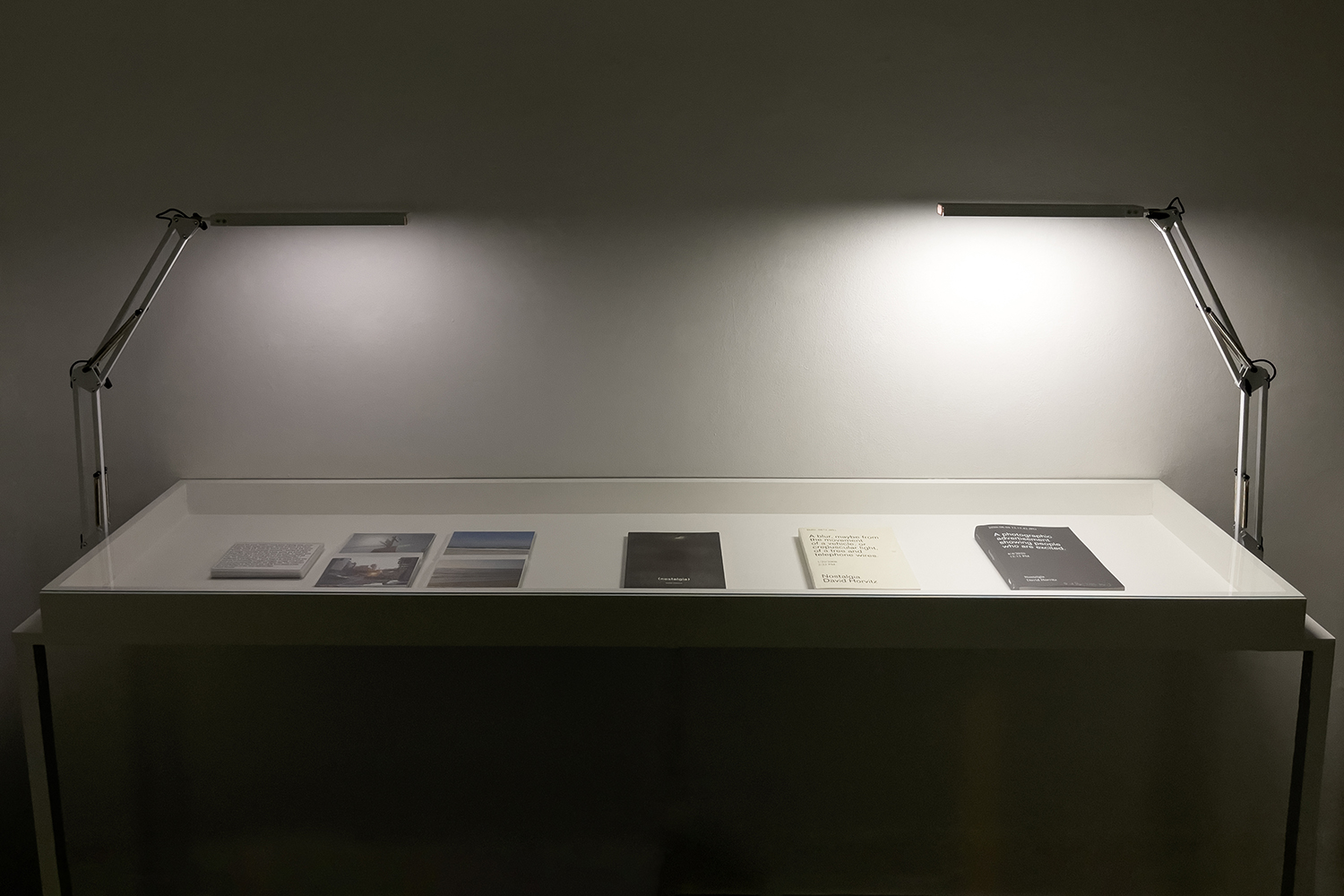

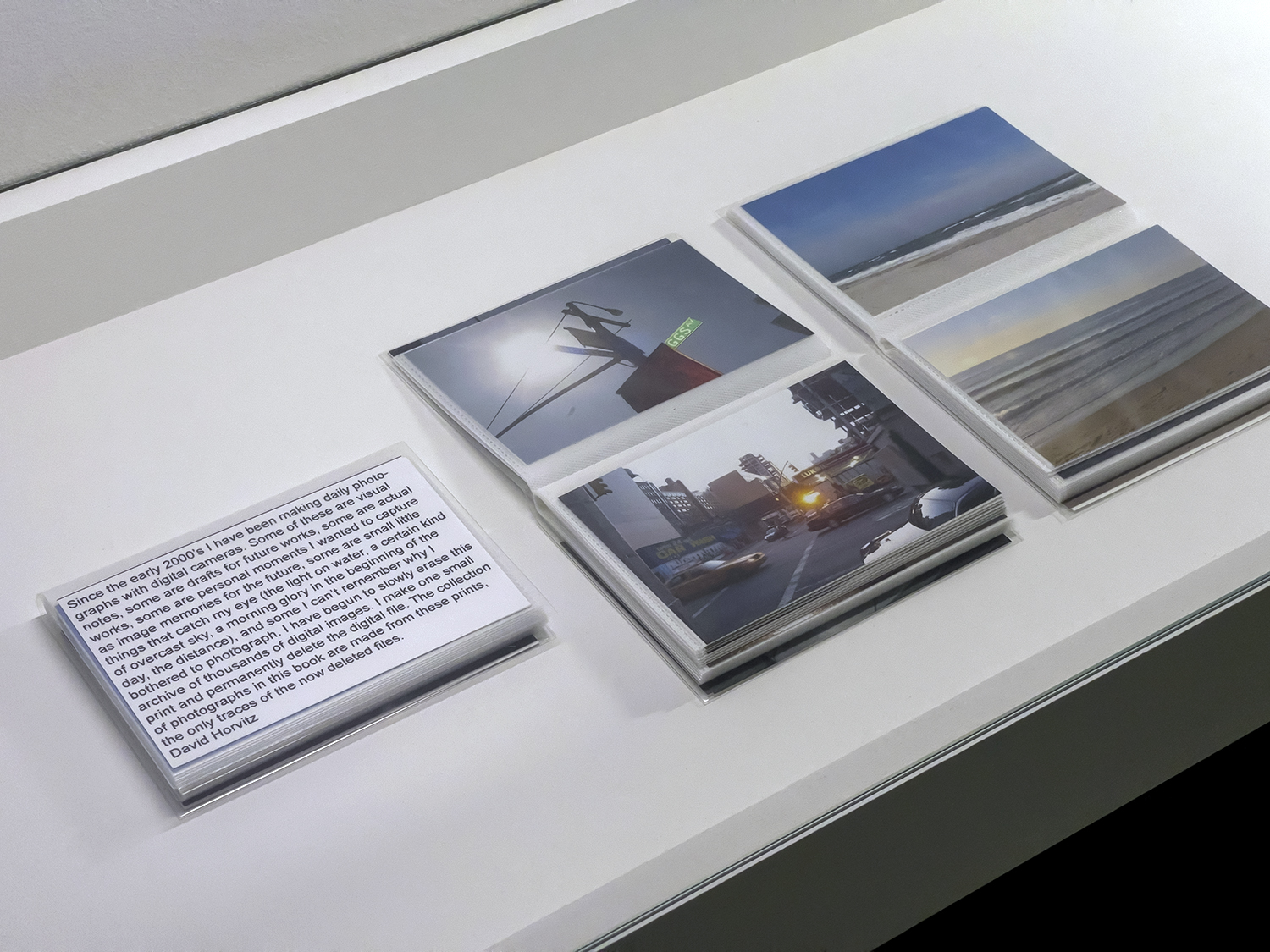
The Submersion of Images
Jean-Kenta Gauthier | Vaugirard
Jean-Kenta Gauthier Vaugirard
4, rue de la Procession 75015 Paris
Opening reception: Saturday 15 October, 2 - 8 pm
Book signing from 6.30 pm of Nostalgia 3 with David Horvitz
Opening hours: Wed - Sat, 2 pm - 7 pm
This project is about erasure. Memory. Forgetting. Data. Archives. Etcetera.
David Horvitz
Presented from 15 October 2022 to 21 January 2023 at the Jean-Kenta Gauthier / Vaugirard gallery, The Submersion of Images brings together all the manifestations of the Nostalgia project initiated since 2018 by David Horvitz (born in Los Angeles, where he currently lives and works) and whose title refers to the film (nostalgia) made in 1971 by the American director and photographer Hollis Frampton (1936-1984). The exhibition is open to the public for 16,380 minutes, resulting in the projection and erasure of 16,380 photographs taken by David Horvitz since the early 2000s. The exhibition is accompanied by Nostalgia 3, a book published by Edition Taube (Munich and Zurich) and Gato Negro (Mexico City).
"In 2018, in a culture over-inundated and amassed with photographs (mostly digital) and with eroded attention spans, I decided to start erasing my photo archive. This erasure became an artwork. I titled it Nostalgia", David Horvitz writes. The title of the exhibition "The Submersion of Images" sums up the artist's observation. In a world where images are accumulating, mostly of digital origin, and where storage of this data even raises environmental issues, destruction of these photographs is an act of resistance.
The title of the exhibition also echoes La Subversion des images [The Subversion Of Images], a small group of photographs made at the end of the 1920s by the Brussels surrealist Paul Nougé (1895-1967), whose dreamlike and imaginary dimension seemed to break the banality of reality. A century later, the technological revolution has allowed an extraordinary accumulation of often ordinary images which, crushed by their sheer number, seem to drown among themselves. A century later, David Horvitz turns the surrealist proposition on its head and turns the erasure of his often ordinary images into a disruptive act that breaks the banality of our domestic use of photography.
From 15 October 2022 to 21 January 2023, with the exhibition open to the public for 16,380 minutes, 16,380 photographs from David Horvitz's archive are each projected on a large scale in the gallery for 1 minute before being subsequently erased. "I chose 1 minute because it is a simple unit of time. And even though it is only a short moment, our attention span is so eroded by the accelerated culture that spending a minute looking at an image, especially a banal one, seems like a very long time," says Horvitz. Each photograph is thus shown for the last time, with or without a witness, and the archive slowly fades away. If the last minute of the image is akin to a farewell ceremony before its disappearance, it seems to be the visual counterpart of the minute of silence, a ritual which is observed following a disappearance. David Horvitz's insistence on the intensity of a duration is reminiscent of many other projects made over the past decade, such as posters that define the rhythm of a clock (Proposals For Clocks, 2016), or his digital clocks that slow down time while falling asleep.
The Nostalgia project is also accompanied by a series of texts collected for the first time in (nostalgia) (Gato Negro, Mexico, 2019), an artist's book by David Horvitz in which each page presents a short sentence describing a photograph that has been erased. Each sentence, similar to a prose poem, is accompanied by a date and a file name. Coinciding with the exhibition The Submersion of Images, the third volume of David Horvitz's Nostalgia is published, a book containing 300 descriptions of photographs that have not yet been erased before the opening. In this way, the book's status changes through the course of the exhibition, from programme to memory.
The exhibition also presents a selection of texts pasted on the walls, descriptions of photographs that each evoke issues of memory, presence in the world, and the artist's trace, which by the end of the exhibition will have been erased.
In 1971, the American director and photographer Hollis Frampton (1936-1984) made (nostalgia), an experimental film, one of seven elements that made up his Hapax Legomena or "(things) having been said once". In it, Frampton stages a succession of small silver prints of his own photographs, each visible for about a minute, which are gradually burnt on a baking tray while information about the image is narrated by the Canadian artist Michael Snow. Playing with an effect of suspense, Frampton orchestrates the disappearance of his images while insisting on descriptions that may also remain in the viewer's memory.
With his Nostalgia, David Horvitz is doing something similar. Except that once his files have been deleted, he can no longer access an original negative.
But one can always photograph the projection, and then create a memory of Horvitz's images in another archive.
— Jean-Kenta Gauthier, October 2022